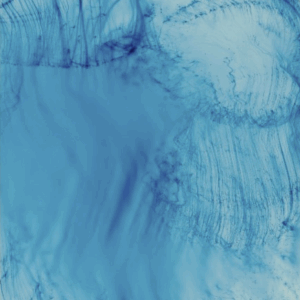JTF (just the facts): Published in 2024 by Zatara Press (here). Hardcover (17 x 25 cm), 154 pages, with 80 black-and-white and color photographs. Includes a text by the artist. Design by Lorenzo Fanton. In an edition of 300 copies. (Cover and spread shots below.)
Comments/Context: A number of recent photobooks have dug deeply into versions of family trauma and incomplete family histories. Out of the blue (reviewed here) by the Swiss artist Virginie Rebetez explores the family archive of a missing girl, probing its layers of absence and invisibility, and ultimately turning to reimagination and recontextualization to make sense of the family memories and a traumatic event. PASACO, 1996 by Luis Corzo (reviewed here) re-interprets the events surrounding his own childhood abduction, using dispassionate investigative methods to provide distance from the trauma. And a new photobook by the American photographer Maya Meissner similarly deals with family trauma, triggered by her family’s close encounter with the Yosemite Killer in the late 1990s.
In September of 1998, the Meissners went on vacation to Yosemite National Park, where they stayed at a roadside motel, the Cedar Lodge. Years later, in 2014, Meissner’s mother shared with her what had happened during what she remembered as an idyllic childhood vacation: a man tried to break into their motel room in the middle of the night. At the time, her father yelled and scared the man off, and the family went on to enjoy their visit. But five months after their trip, four women – Carole Sund, her daughter Juli, their friend Silvina Pelosso, and a naturalist Joie Armstrong – were brutally murdered in Yosemite, and the confessed killer was the handyman at the Cedar Lodge. The news of the horrific murder shook the nation, tainting the idyllic landscapes of Yosemite with human violence. The Cedar Lodge is Meissner’s investigation into her own “discomfort, grief, confusion, and separation from the twist of fate that intertwined with these events.” It offers a deeply personal and even poetic reflection, delivered in the form of a photobook.
The Cedar Lodge is a hardcover book with a vertical orientation, yet slightly narrow. It has a beige cloth cover and three trees (a reference to the logo of the Cedar Lodge) are debossed in the center in black. A brown strip appears over its spine. The artist’s name and the title of the book are debossed on the spine. A collage of pixelated archival images takes up the endpapers, providing an exciting visual introduction to the book. Inside, some photographs are printed full bleed while others have generous white space around them. There are also numerous fold outs, creating another layer of interruption in the storyline. A small booklet with the text printed on a green background is attached to the inside back cover. The book format helps to emphasize the multiple layers of complexity in this narrative.
The booklet offers a chilling background to Meissner’s visual narrative. It details the pulse-pounding abduction of seven-year-old Steven Stayner by a child molester. He was held captive in a remote cabin and sexually abused for seven years, and he eventually escaped with a second young kidnapping victim. Ten years after, Steven tragically died in a motorcycle accident at the age of 24. After his death, something changed inside his brother Cary Stayner. He was the one that brutally murdered three tourists and a naturalist in Yosemite National Park. He was arrested the same year, convicted of all four murders, and sentenced to death. He remains on death row in San Quentin State Prison.
Meissner’s photobook doesn’t follow a linear narrative, rather weaving various fragments of the story as Meissner collects and processes its fragments. Offering various perspectives, the artist brings together materials from different sources, including photos she took as a teenager, altered family snapshots, collages, and more recent photographs made in and around the motel. The photobook opens with the full bleed image of nature, an idyllic scene, and followed by an empty page from the motel residents log, hinting that something is off. As the narrative unfolds, a page with photographs of nature taken around Yosemite National Park opens to black-and-white images shot in and around the Cedar Lodge, creating multiple layers of locations and connections.
In addition to serene shots of Yosemite, there are photographs of motel, many of them shot at night: a wall mural, a bus stop, the motel building, a cart, some stairs, the side of the motel building with the three cedars motif, some curtains, a telephone from one of the motel rooms, etc. These photographs create an atmosphere of suspense, mystery, and persistent investigation.
Meissner often layers various elements together, such as photographs, newspaper clips, pages from notebooks, maps, notes, envelopes, and announcements, piling and organizing the years of research she put into this project. One spread pairs two images that consist of the map of the Yosemite area, old family snapshots, and a coin pressed with the Cedar Lodge logo. A number of family photos shot around Yosemite landscape are altered to cut out people’s faces, making them more anonymous and blending them with the environment.
One of the very last spreads has a small photo placed on a page from a notebook; it shows Cary Stayner in an orange shirt and handcuffs standing with three police officers (with their faces cut out), set against the lines from the notebook page. It is followed by a close up shot from what looks like a motel room with the window curtains open, and a fold out opens to reveal a black-and-white photo of torn fabric.
Meissner admits that working on this project over the past 10 years has brought her very close to the nightmare her family experienced. In this way, she turned to her artistic practice into a process of investigating, healing, and finding closure. As she put all the elements of the story together in her photobook, “the history of the place became less of a threat”, and both Yosemite and the Cedar Lodge once again became beautiful again. The Cedar Lodge is a thoughtful and elegant photobook that documents that journey, reckoning with place, memories, and trauma on a personal level.
Collector’s POV: Maya Meissner does not appear to have consistent gallery representation at this time. As a result, interested collectors should likely follow up directly with the artist via her website (linked in the sidebar).




























